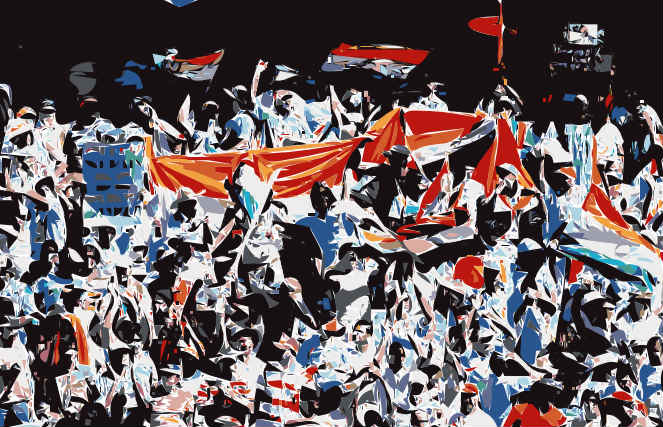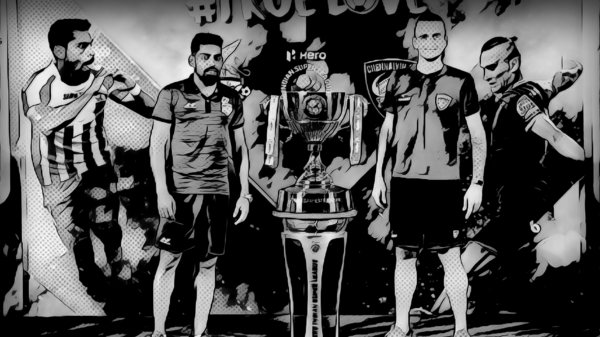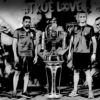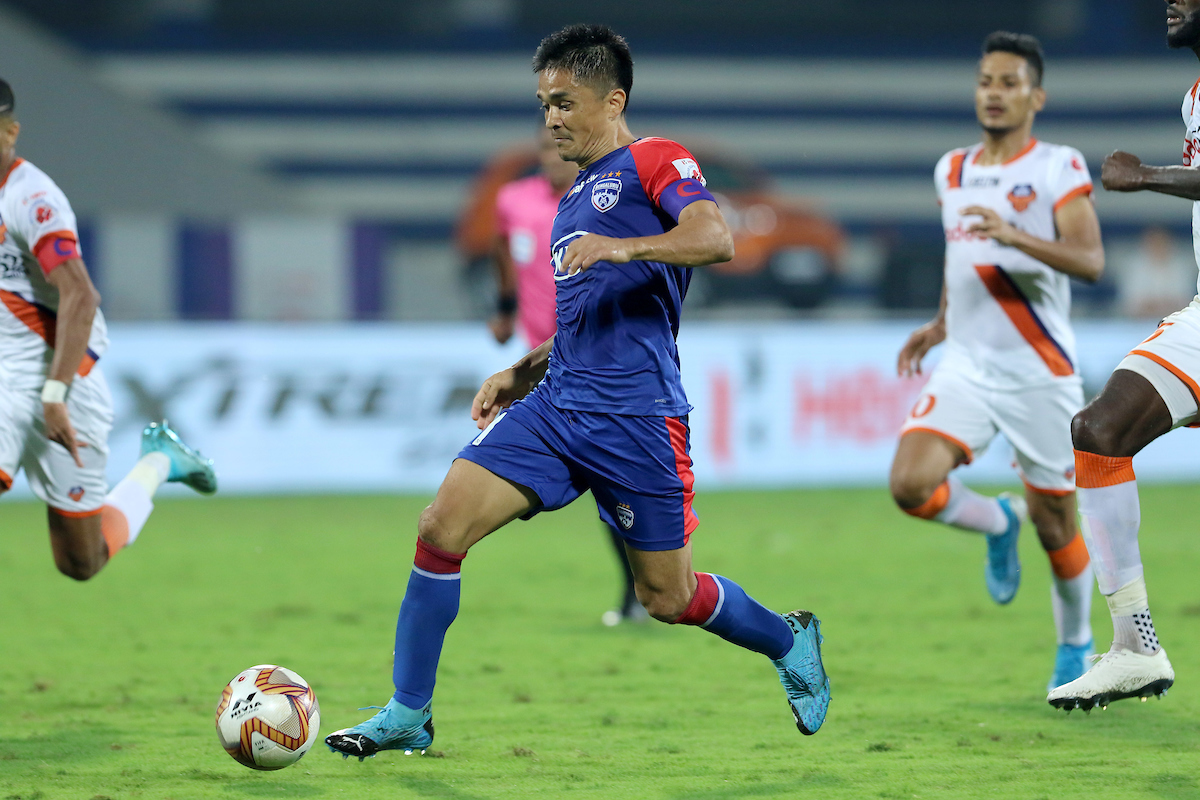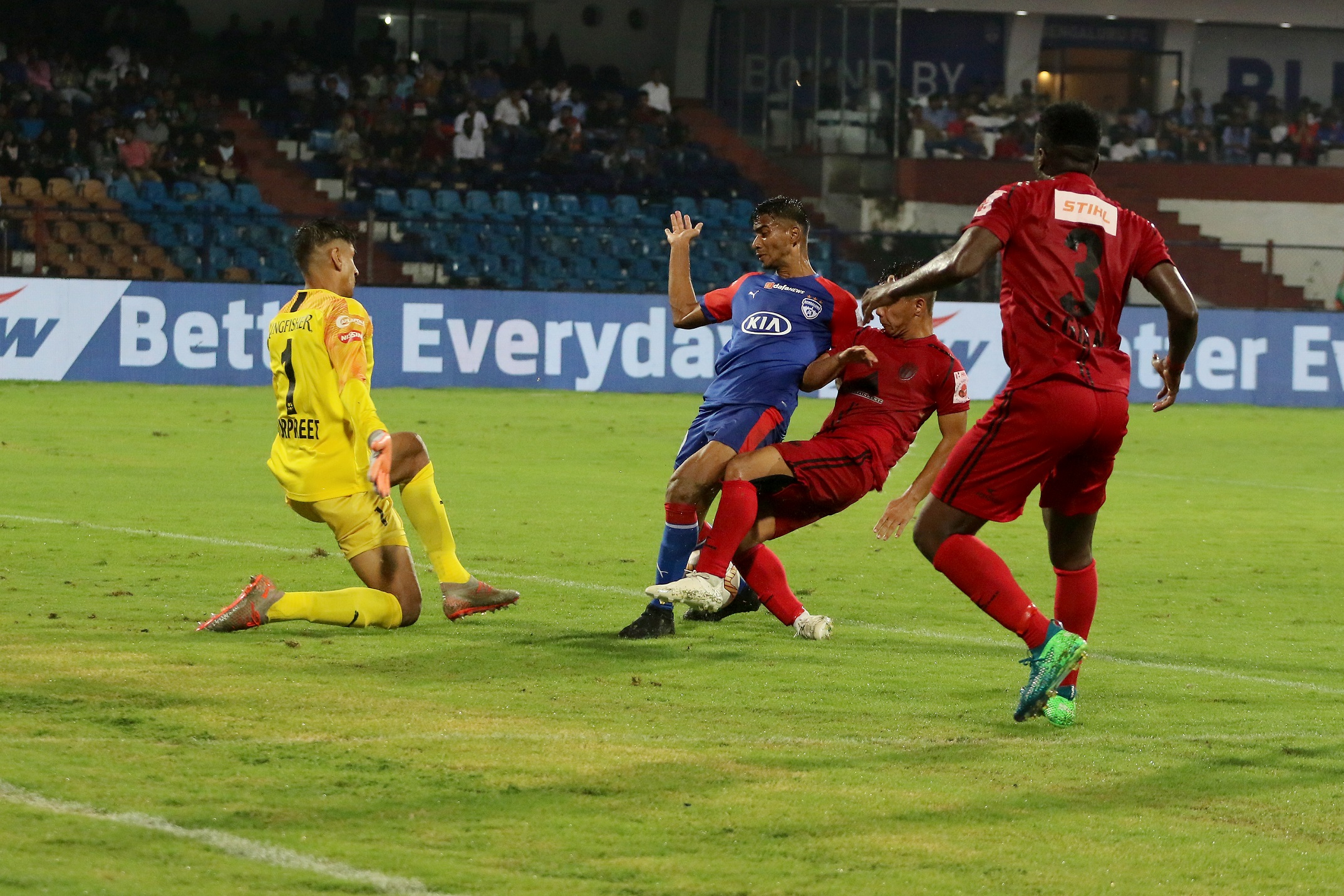The much talked about Indian Super League (ISL) is almost upon us. The tournament has certainly garnered interest due to its high profile owners, foreign players and aggressive marketing. Indian football enthusiasts though have voiced concerns over the impact of the franchise-based competition on the nation’s premier domestic competition, the I-League. Alshaar Khan is one of those and gives us his appraisal of the current state of the I-League and its uncertain future.
Out of the multiple sub-plots and wriggly twists in modern-day sitcoms, one of the threads involves the introduction of an evil twin (or a doppelgänger). Usually the antithesis of the protagonist, the show never remains the same after this character plays its part. A coterie of I-League well-wishers has been drawing similar analogies ever since the inception of the pompous Indian Super League (ISL), which is now set to get underway next month. Giving form to their fears, there has already been some dissonance between the two very different forces.
For starters, the I-league that usually gets underway in or around September has been pushed to January because of the indecisiveness surrounding the Indian Premier League(cricket)-inspired tournament for a good quarter of this year. Because of mid-day kick-offs (due to absence of sufficient lights in most of the stadiums), the September inauguration of the country’s top-tier league ensures that the weather is comfortable enough to attract maximum numbers in the stands right till the business end of the competition. But temperatures will soar this season with the league being forced into the torrid Indian summer.

Another issue that could deter the cause of the country’s more-established tournament is the fact that its marketing partners IMG-Reliance are the organisers of the upcoming franchise-based affair; a reason that could redirect the influx of finances and attention away from it.
Reformatted in 2007, the I-League has experienced growth, slowly yet definitely. Bengaluru FC’s title win last season was one of the most pivotal events in the league’s short history. It should be specially noted that this was for the first time in the seven-year period of the league that a team from outside the state of Goa has managed to lay their hands on this piece of silverware.
In a country hardly acquainted with club-culture, 500 fans travelling with the team for their last fixture (played in Goa) to celebrate their coup, which was sealed with one game to go, is a heartening sign for things to come. Even the home games witnessed the best numbers in the past 25 years with the official statement from the club claiming an average attendance of around 7,500 per game.
The romanticism of BFC with Indian football took first steps when Jindal Steel Works – among the several competing corporate companies – won the franchise rights to form a football club representing the city of Bengaluru. Ensuring that the vision of the project does not take the back seat amid the excitement of this new acquisition, the young CEO of the club got his priorities straight. Making a statement of intent, BFC signed former Manchester United youth player and Blackburn Rovers assistant coach Ashley Westwood as the first ever manager of the team. He didn’t hesitate to flex his enormous financial muscle when he signed former Premier League defender John Johnson and Indian captain Sunil Chettri.
Maintaining their transfer policy, they did not run after the local players who were demanding astronomical amounts nor did they seek marquee, well-known foreign players plying their trades in the Indian domestic circuit. Rather, they brought in a bunch of youngsters to work their socks off alongside a couple of foreign centre-backs to lay a solid foundation, and the India captain to lead the line. Thus they saved wisely for infrastructure, youth development programs and facilities for players and club members, with an eye on the future.
Having got it reasonably right on paper, the club surprised fans and critics alike by playing a brand of football much different from what the league has seen over the years. Manager Westwood – with his experience in English football – has formed a balanced team and has them playing with the ball on the floor, contrary to the Indian defending-third-to-attacking-third-long-ball game. He has also brought in a new training regime, with emphasis on dietary nutrition and physical fitness. The club then bolstered its coaching prowess with foreign imports such as Malcolm Purchase and Ali Uzunhasanoglou. While Purchase, who claims he rejected the offer of Premier League club to keep his word to Westwood, arrives as the sports performance and nutrition coach, Ali is a goalkeeping coach with vast foreign experience.
The change in culture brought about by the club spreads its roots outside the turf too. Tapping the enormous cosmopolitan market potential of Bengaluru, the club partnered with brands like Cafe Coffee Day and Wipro for the sale of tickets. When they sensed that they might be missing out on spectators due to full houses, the club tied up with Arbor Brewery, a popular pub in the heart of the Silicon Valley of India, for live screening of matches. Not to forget the BFC Bazaars where one could grab personalised club merchandise.
Another unique initiative taken by the management to reach out to the fans and make them feel a part of the club came in the form of the ‘March to the Stadium’, which saw fans gather at a distance from the stadium and walk towards the stadium together in solidarity for every match. The chants from these supporters indicated one thing for sure. BFC was causing a major paradigm shift for Indian football fans. People started looking beyond the Premier League and the La Liga for lending support and the much-overlooked I-League looked, for the first time, at home.
But beneath this layer of greener pastures also lies the barren land of ailments for BFC, which personifies the league as a whole too. The basic issues of infrastructure and youth development cannot be brushed under the carpet by the makeup of success. The stadium, which is a makeshift facility, needs urgent expansion owing to the growing crowds in home games. Also, the club should now bring to Indian football a proper youth development system, having already sparked a revolution of sorts in its first season.
Nonetheless, what this team from the City of Gardens has brought into Indian football has beckoned towards the beginning of a new era of the league; a dream which should be equally attributed to the foresight and competence of the owners of the team, Jindal Steel Works.
Talking of which, brings us to the I-League’s other twin that, too, comprises of teams owned by affluent names. Having mentioned the negatives that accompany it, there is no denying the fact that ISL would also bring a substantial lot into Indian football.
The commercial aspect says that proficient owners would mean a definite improvement in the infrastructure of each of the eight venues. Although, the biggest plus in terms of worldwide attention is the participation of the likes of Alessandro Del Piero and Robert Pires alongside India’s fringe and globally invisible footballers. There has been a considerable amount of development in Major League Soccer because of David Beckham’s spell with LA Galaxy. Likewise, Nicolas Anelka and Didier Drogba also helped put the Chinese League on the world map, with India set to fall in line.
However, the legends that have signed up for the ISL are all well past their prime. Most of them are either coming in on the back of unsatisfactory performances in other small leagues or have already hung up their boots. To be fair, these retired or almost-retired Europeans will play relatively less important roles on the pitch than off it. Garnering mass attention into the beautiful game is all that it would take to get the ball rolling in the country that FIFA calls the sleeping giant of football. But could this not have been achieved by introducing these tweaks into the I-League? Maybe the I-League could have been marketed the same way as its younger rival. Maybe the big names from other continents could have played for Dempo or East Bengal or Pune FC. Maybe the wealthy owners could have bought an I-League team and done more for grassroots development in the country. But maybe IMG-Reliance, with its major involvement in Indian football, has something better in mind.
After initial quarrels, a majority of the I-League teams have eventually loaned out their players for the new competition who will later return in time for the beginning of the I-League. Concerns over fatigue and fitness still persist along with certain contract complications.
All in all, there is a substantial buzz among the general public about the next big thing in Indian football but clouds of uncertainty blur the future. Will the two leagues co-exist or a does a merger await? If sense is to prevail, then an amalgamation will get the best out of both the propositions. Because if ISL does make the breakthrough – which does not look unlikely – then its position outside the system of Indian football would not do much as compared to the I-League which is relatively more closely linked to the rest of the sporting pyramid as well as the local communities. Thus, the support and interest of young players, media and fans could be best directed towards the I-League which has been boosted with a heartening impetus from Bengaluru FC’s recent success.
Will the new entrant impress on debut or will it square up the ball for its senior to slot it into the net? For how long will the new-boy of Indian football play? What does it mean for the country which is set to host the Under-17 FIFA World Cup not even three years from now? Only time will answer these conflagrating questions. But at least the country’s football is being talked about because of them today.
Written by Alshaar Khan
- I-League: An Exciting Title Race on the cards - March 13, 2015
- Indian Football Column: BFC’s first competitive Asian outing, Pune’s defeat and more - February 10, 2015
- Indian Football Column: Bengaluru FC’s first win, Thongkhosiem Haokip impresses and more - February 3, 2015




















































